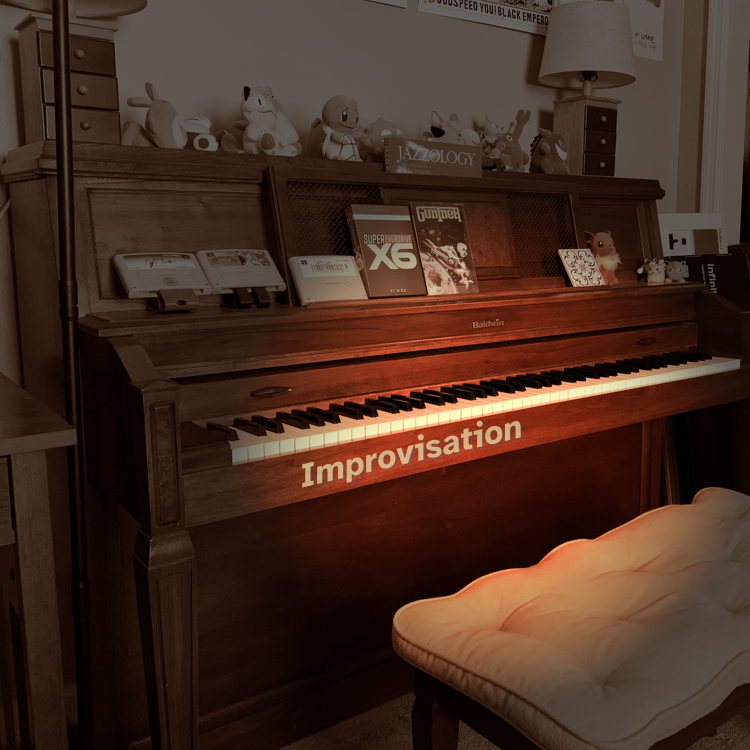boom
72
12.5mb
custom level(s) for Boom-compatible Doom clones
::|CONTENTS
- Boom on BotB
- How to Play
- Tools and resources
Boom is a limit-removing source port of
Doom created by TeamTNT (the same group of mappers that made TNT: Evilution). Boom fixes bugs, removes map limitations and adds new features while still maintaining the feel of the original game. As such, Boom remains a popular format for newly-released PWADs.
The final version of Boom released was
Boom 2.02 for DOS in 1998, and the source code was released in 1999. As a result, many source ports are now "Boom-compatible", offering support for all of Boom's unique features. This is what most people mean by "Boom maps", and is also what the BotB format refers to.
One of the main mapping features that Boom adds is additional linedef types (i.e. triggers) - not only expanding and generalizing the hard-coded linedef types from the original game, but also adding completely new features such as silent teleporters and conveyor belts. Clever usage of these features can result in much more dynamic and exciting maps.
Boom's uses IWADs and PWADs in a similar way to
the original game. However, it also supports configurable animated and switch textures, and introduced the BEX standard for easily distributing
DeHackEd settings. For a comprehensive reference of features, see the
HTML version of boomref.txt.
Boom on BotB
The Boom format works similarly to
vanilla Doom - so check that page for more detailed information.
Boom entries on BotB are generally single-player maps for either Doom or Doom II. WADs may also include custom music or custom graphics (unless stated otherwise in the bitpack).
Although technically the maps should be tested to be compatible with the final DOS release of Boom, this is rarely done in practice. The standard nowadays is to test the maps are compatible with
DSDA-Doom set at complevel 9. That said, DSDA-Doom (and its predecessor, PrBoom+) support some extra features that the original Boom does not - namely linedef types 271/272 (sky transfers), and certain DeHackEd features (which aren't applicable on BotB). In addition, ensure that jumping is disabled in the settings.
How to Play
Setup for playing Boom-compatible maps is similar to the setup for playing vanilla maps. You will first need to source the IWAD for the relevant game, which can be done by purchasing Doom/Doom II on Steam or a similar service. An option for those who don't have the Ultimate Doom or Doom II IWADS is
Freedoom, designed to be a free, drop-in replacement for those IWADs. Note that the Freedoom WADs have extra textures that are not present in the original IWADs, so PWADs built on top of Freedoom may not necessarily be compatible with the original IWADs if those extra textures are used.
You will also need to download a Boom-compatible source port; ideally this is
PrBoom+ or
DSDA-Doom, but another port, like
Eternity Engine, will also work reasonably well. Or heck, you can even use the original DOS version of Boom in DOSBox for maximum authenticity!
Once you have your method of choice set up and running, the PWADs available on BotB can be played by including them in the relevant command-line arguments. The following examples assume a PWAD called FOO.WAD to be played with Doom II, starting on MAP07.
NOTE: Some source ports have a launcher you can turn on in the settings that lets you pick and launch WADs with a GUI instead. There's also
Doom Launcher, a separate Windows utility that accomplishes the same purpose.
DOS Boom
boom.exe -iwad DOOM2.WAD -file FOO.WAD -warp
PrBoom+ and DSDA-Doom
prboom-plus.exe -iwad DOOM2.WAD -file FOO.WAD -warp 7 -complevel 9
Complevel should always be 9 for modern Boom-compatible WADs. DSDA-Doom has the same command-line format (with a different .exe, obviously).
GZDoom
gzdoom.exe -iwad DOOM2.WAD -file FOO.WAD -warp 7
GZDoom is not ideal as it doesn't aim to be 100% compatible with the DOS Boom releases, but it's included here as it is a popular source port.
Tools and resources
Map editors and resource managers
SLADE 3, a cross-platform resource manager and map editor. If you want to add custom assets to your WAD, you basically have to use this- but you can still do all your map editing in another utility.
Ultimate Doom Builder, a map editor for Windows. It's the latest in
a long line of forks of the original Doom Builder, and is currently the only fork still receiving regular updates. Some prefer
Doom Builder X or
GZDoom Builder instead.
Eureka, a cross-platform map editor and the second choice (after SLADE) for people not on Windows.
Source ports
DSDA-Doom, the de-facto flagship port for Boom. It's a continuation of
PrBoom+.
Eternity Engine, an alternative to PrBoom+ that also strives to maintain its Boom compatibility
Many others.
Special caution must be taken with
ZDoom-based ports. GZDoom is one of the most advanced source ports out there- but as a result, it's way less strict than most ports when it comes to lump organization and texture formats. It's easy to accidentally make a "Boom" wad that only runs in GZDoom, so be careful!
See Also
doom (format) goes into a little more detail about WAD files.
boomref.txt, a comprehensive reference of all of Boom's additional mapping features
BOOMEDIT.WAD, a WAD designed to demonstrate Boom's new features
Doom Wiki, a wiki for Doom-related information
Doomworld, a Doom forum
idgames, a large FTP-based repository for PWADs
Freedoom
Doom Launcher
A very thorough Ultimate Doom Builder tutorial


